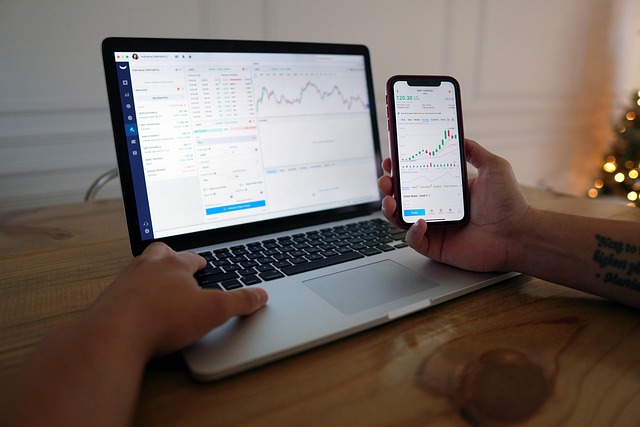Investing N: Balancing Risk and Reward in Today’s Economy
In the ever-evolving landscape of finance, the adage “high risk, high reward” rings particularly true. As individuals and organizations navigate through the complexities of investing in today’s economy, understanding the delicate balance between risk and reward becomes paramount. This article explores the importance of striving for that balance, delving into various investment vehicles, market conditions, and strategies that define today’s investment paradigm.
The Current Economic Climate
The global economy is an intricate web of interconnected markets influenced by diverse factors including geopolitical tensions, technological advancements, and unprecedented events such as the COVID-19 pandemic. As we move into 2024, it’s essential to reflect on how these factors have shaped investor sentiment and behavior.
The U.S. Federal Reserve’s monetary policy, marked by fluctuating interest rates and inflation concerns, has created a challenging environment for investors. Low-interest rates historically encouraged borrowing and risk-taking, whereas rising rates can lead to market corrections and increased skepticism. Knowing when to enter or exit a position requires not just skill but an acute awareness of external conditions impacting the economy.
Understanding Risk
Risk in investing can take many forms. For starters, there are market risks, which are associated with overall fluctuations in stock prices driven by economic conditions, political instability, or public sentiment. Then there are credit risks, stemming from the possibility of a borrower defaulting on a loan. Furthermore, liquidity risks arise when an asset cannot be sold quickly without incurring a loss, adding layers to the complexity of investing.
Another vital aspect of risk is systemic risk, reflecting the potential for instability in an entire financial system or market. Events like the 2008 financial crisis serve as stark reminders of how interconnected our global economy has become, where one misstep in a significant sector can lead to widespread repercussions.
Evaluating Reward
While understanding risk is critical, appreciating potential rewards is equally important. In investing, rewards often manifest as returns on investment (ROI), capital gains, dividends, or interest income. Investors need to weigh potential returns against the associated risks, considering factors such as time horizon, financial objectives, and market conditions.
Emerging sectors like technology, renewable energy, and biotechnology frequently represent areas of significant growth potential. These sectors, while high in risk due to their volatility, can yield substantial financial rewards for those who are willing to navigate their uncertainties. Understanding the underlying dynamics of these sectors can offer investors unique opportunities for high returns.
Investment Vehicles in Today’s Economy
In assessing risk vs. reward, it’s crucial to look at various investment vehicles available in today’s market. Each option offers its own unique blend of risk and potential reward.
Stocks
Stocks are a cornerstone of the investment world. Investing in individual companies can yield high returns, particularly if the company performs well over time. However, equity markets can be volatile, influenced by a cornucopia of factors ranging from earnings reports to macroeconomic trends. Investors must conduct thorough research and analysis to make informed decisions.
Bonds
Bonds often appeal to risk-averse investors seeking stable returns. They serve as a contract where the issuer agrees to pay back the principal amount along with interest. Although generally considered safer than stocks, the trade-off comes in the form of lower potential returns, particularly in low-interest-rate environments. Moreover, the creditworthiness of the issuer plays a crucial role in the risk associated with bonds.
Real Estate
Investing in real estate offers both tangible assets and the chance to generate income through rental yields. However, the real estate market can be influenced by economic conditions, interest rates, and regional factors. Investing in Real Estate Investment Trusts (REITs) provides a way to invest in real estate portfolios without needing to buy property directly, offering both potential rewards and diversification.
Mutual Funds and ETFs
Mutual funds and exchange-traded funds (ETFs) provide investors with a diversified approach to investing, pooling money from multiple investors to buy a broad selection of stocks, bonds, or other securities. This diversification helps mitigate individual asset risk, while still providing potential for portfolio growth. However, fees and expenses may eat into returns, thus careful selection of funds is necessary.
Cryptocurrencies
Cryptocurrencies have ushered in a new era of investment but are characterized by extreme volatility and high risk. The potential for outsized returns has attracted both retail and institutional investors, yet the nascent nature of this market may lead to unexpected downturns. Rigorous research is necessary to navigate this complex and rapidly evolving landscape.
Strategies for Balancing Risk and Reward
Successfully investing in today’s economy requires intentional strategies that balance risk and reward. Here are several tactics that can help investors navigate uncertain waters:
Diversification
Diversification is one of the most widely recommended strategies. By spreading investments across various asset classes (stocks, bonds, real estate, etc.), investors can cushion against severe downturns in any one of those categories. This strategy aims to enhance the speed of recovery during market corrections by minimizing exposure to any one asset.
Asset Allocation
Closely related to diversification, asset allocation refers to distributing an individual’s investment portfolio across different categories based on risk tolerance, financial goals, and investment timeline. Younger investors might lean more heavily on stocks for growth, while those nearing retirement may shift towards bonds and stable value assets to protect capital.
Continuous Monitoring and Rebalancing
The investment landscape is dynamic, necessitating regular monitoring of portfolio performance and market shifts. Investors should periodically rebalance their portfolios to maintain their desired risk level or asset allocation. This proactive approach enables investors to capitalize on market opportunities, while safeguarding against risk concentration.
Utilizing Investment Advisors
Engaging with a financial advisor or investment professional can provide valuable insights and strategies tailored to individual financial situations. Advisors can assist in identifying sound opportunities based on specific risk profiles and help manage dynamics in volatile environments.
The Role of Investor Psychology
Investor psychology plays a critical role in the decision-making process. Behavioral finance examines how emotions and cognitive biases impact financial decisions, often leading to deviations from rational decision-making. Understanding these psychological factors can help investors stay disciplined and focused on their long-term investment goals.
Market sentiment can lead to herding behavior, where investors collectively move in or out of the market based on prevailing trends rather than on sound financial analysis. Staying informed, making data-driven decisions, and maintaining emotional detachment during market fluctuations can significantly influence investment outcomes.
Conclusion
Investing in today’s economy requires a nuanced understanding of how to balance risk and reward. The complexities of modern markets, combined with a plethora of investment vehicles, present both challenges and opportunities for diligent investors. Emphasis on diverse strategies, informed decision-making, and psychological awareness provides a solid foundation for achieving financial success. As we navigate the uncertainties of the global economy, a proactive approach to risk management, investment diversification, and continuous learning lays the groundwork for a secure investment future.
Ultimately, while rewards are enticing, truly successful investing hinges on a keen understanding and mindful management of risks. Embracing this mindset equips investors to traverse the complexities of today’s economy with confidence.


